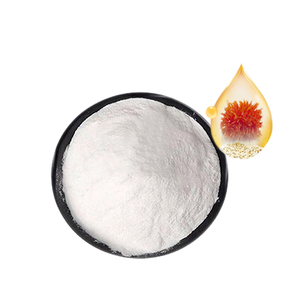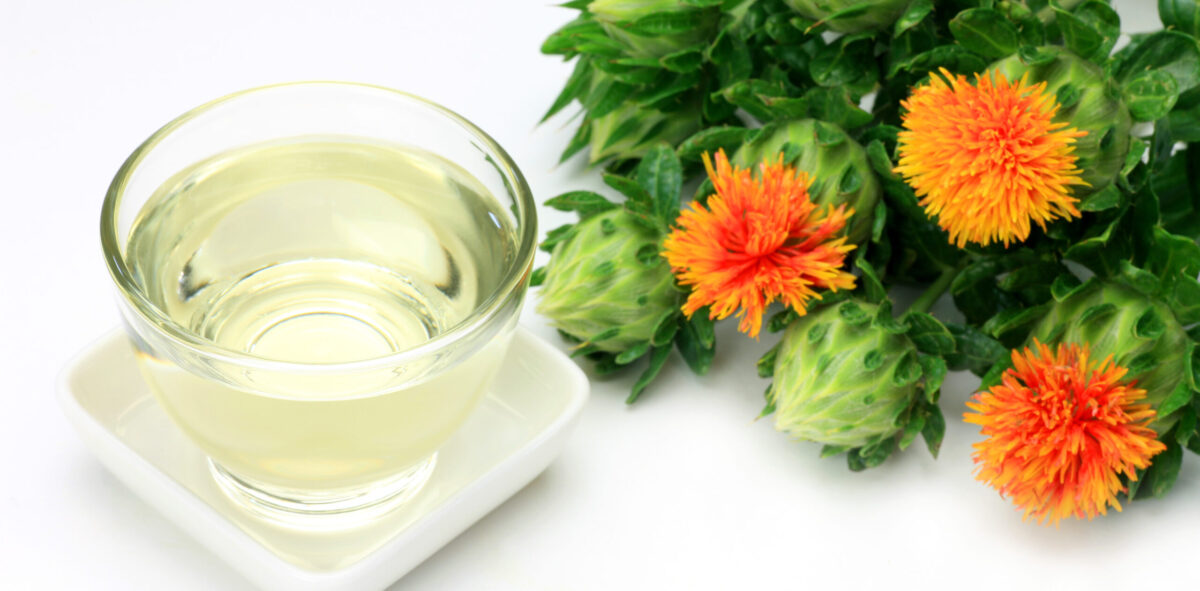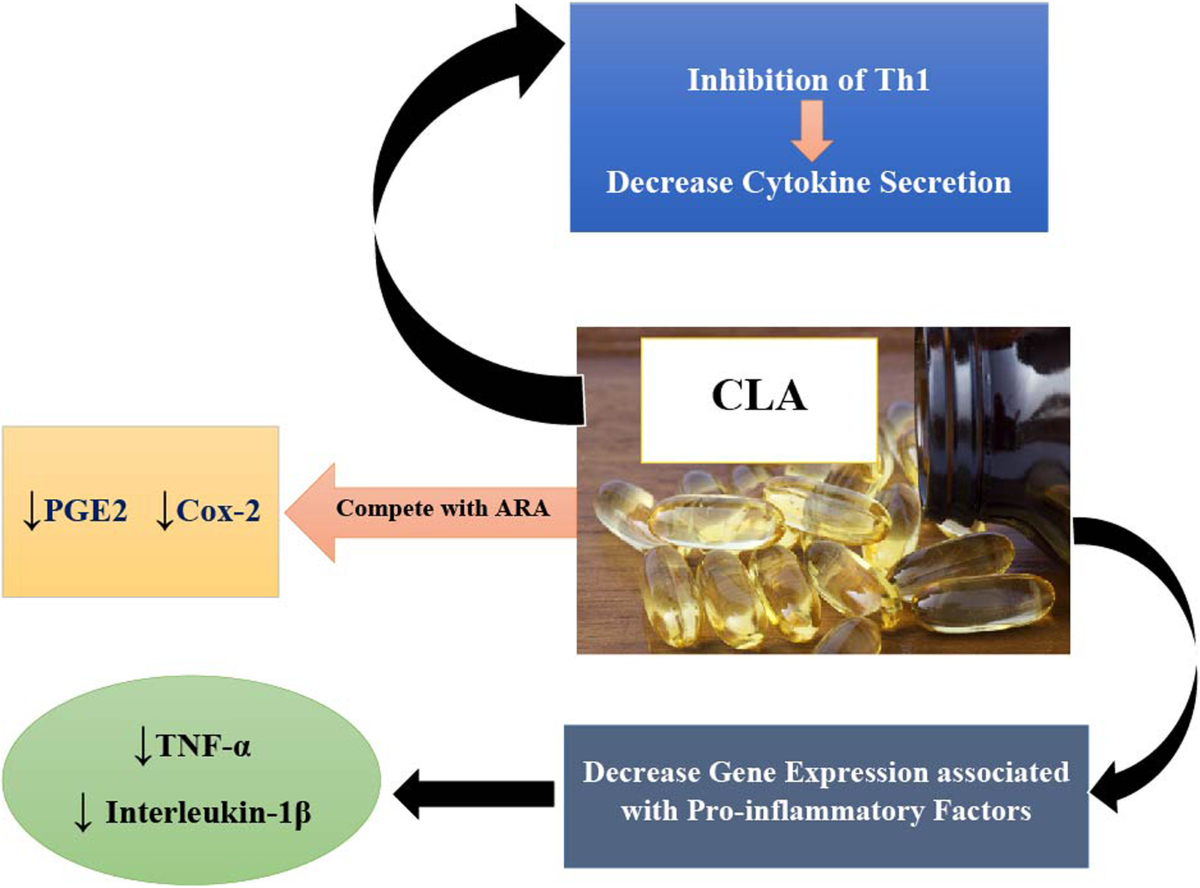What are the benefits of linoleic acid in the body?
Linoleic acid is a polyunsaturated essential fatty acid that is found mostly in plant oils. It’s known as the parent fatty acid of the omega-6 series, and it is essential for human nutrition because it cannot be synthesized by the human body.
In scientific terms, linoleic acid is a nutrient from the carbonyl functional group that contains two double bonds at the ninth and 12th carbons. Why is linoleic acid essential? Because humans cannot incorporate a double bond beyond the ninth carbon of the fatty acid, so it can’t be synthesized naturally and must be consumed.
Like all fatty acids, linoleic acid is used by the body as a source of energy. It is a substrate for the synthesis of physiological regulators that are called eicosanoids, including prostaglandins, prostacyclins, thromboxanes and leukotrienes. These are “local hormones” that serve as mediators of many biochemical processes, like the regulation of blood pressure, blood lipid levels, immune function, blood clotting, inflammation and reproduction.
What is Conjugated Linoleic Acid Powder?
Conjugated Linoleic Acid Powder CLA Powder is mainly based on conjugated linoleic acid from safflower seed oil, and after charge mixture, sterilization, emulsion embedding to form emulsion, and then making powders that are good in dispersion and liquidity by means of spray-drying. Conjugated Linoleic Acid Powder has neutral in taste and smell, and is soluble in cold water. It can be used to achieve the desired conjugated linoleic acid content. It has good solubility in water and is widely used in medical food, dry mixes, baked goods, sauces, solid beverages, etc.
Conjugated Linoleic Acid Glycerides is a very interesting nutritional additive that has been used in large quantities in agriculture and the food industry.

Where Does Linoleic Acid Come From ?
Linoleic acid is mainly obtained from plant sources, notably omega-6-rich oils such as sunflower oil, soybean oil, safflower oil and grapeseed oil. In food, it is found in seeds, nuts and certain meats. In cosmetics, it is often extracted from vegetable oils or incorporated as a pure oil. The wide availability of this fatty acid in nature makes it a precious and accessible resource. Linoleic acid plays a crucial role in skin barrier integrity, cellular health and moisture regulation.

Properties And Active Ingredients :
Linoleic acid is an active ingredient highly prized for its many beneficial properties for skin and hair. Here are its main characteristics and actions
Restores the skin barrier : By reinforcing the skin’s lipid barrier, linoleic acid helps maintain hydration and protect against external aggressions.
Anti-inflammatory properties : This fatty acid has natural anti-inflammatory effects, soothing skin irritations and reducing redness and inflammation.
Improves skin texture : Linoleic acid helps reduce skin imperfections and irregularities, promoting a more even, luminous complexion.
Hydration and sebum regulation : It maintains optimal hydration levels without weighing the skin down, and also helps balance sebum production, beneficial for oily or acne-prone skin.
Antioxidant effect : Thanks to its ability to protect cells against oxidative stress, linoleic acid helps slow the signs of aging and preserve skin health.

Health Benefits
1. May Reduce Risk of Cardiovascular DiseaseStudies show that consuming linoleic acid may help to lower LDL cholesterol, improve blood pressure and reduce your overall risk of cardiovascular disease.
In 2009, the American Heart Association published an advisory recommending that at least 5 percent to 10 percent of energy from omega-6 fatty acids, primarily linoleic acid, reduces the risk of cardiovascular disease, concluding that reducing intake levels would likely increase the risk. Researchers have contended that this is true when there’s a proper balance of omega-3 and omega-6 fatty acids, with a 1:1 ratio.
2. Promotes Healthy Brain Function
There’s significant evidence that linoleic acid plays a critical role in our cell membranes, which impacts healthy brain function. Researchers have found that brain unesterified linoleic acid concentration increases following a brain injury, which suggests that linoleic acid or its metabolites may be involved in the natural response to injuries involving the brain. Animal studies indicate that this acid may be involved in neurotransmission and participates in the response to ischemic brain injury, such as stroke.
3. Supports Skin and Hair Health
A deficiency in linoleic acid may lead to scaly and itchy skin, which has been shown in animal studies. Linoleic acid has a direct role in maintaining the water permeability barrier of the skin, thereby improving skin hydration. It also helps modulate the closure of skin wounds, and it reduces skin inflammation and acne. Plus, a major metabolite of linoleic acid possesses anti-proliferative properties, which means that it can help prevent the spread of malignant cells into surrounding tissues.
4. Improves Reproductive Health
Impaired reproductive health is a symptom of linoleic acid deficiency. Because linoleic acid contains essential components of all cell membranes, it can influence reproductive processes and alter the production of prostaglandins. Plus, the reproductive system requires a high polyunsaturated fatty acid content to provide plasma membranes with the fluidity that’s essential at fertilization.
5. Boosts Immune Function
Polyunsaturated fats in both the omega-6 and omega-3 families are useful in human autoimmune-inflammatory disorders. Research conducted at the University of Greenwich at Medway’s School of Chemical and Life Sciences in the U.K. found that omega-6 fatty acids help prevent or reduce the severity of autoimmune disease by enhancing immune function and regulating cellular immune reactions.
6. Protects Bone Density
Human studies support a greater intake of polyunsaturated fatty acids, including both omega-3 and omega-6 fatty acids, for higher bone mineral density and the reduced risk of fragility fracture. These fatty acids influence bone cell metabolism, help to preserve skeletal formation and may help to reduce the risk of osteoporosis and fractures.

Recommended Intake
It’s not hard to come by foods containing linoleic acid, since most processed and packaged foods are prepared with vegetable oils containing the polyunsaturated fat. But in order to benefit from linoleic acid consumption, it’s best to consume the fat in organic, non-GMO whole foods, including grass-fed beef, chicken, eggs and plant-based oils. Continue to avoid eating too many unhealthy foods that contain linoleic acid, including processed meats, potato chips and store-bought salad dressings.
Although there is no specific recommended daily allowance for linoleic acid, adequate intakes have been approximated based on median intakes of healthy individuals living in the U.S. Here’s a breakdown of adequate intakes of linoleic acid for children and adults, according to research published in the international review journal Advances in Nutrition:
Adult men (19–50 years old): 17 grams per day
Adult women (19–50 years old): 12 grams per day
Adult men (51–70 years old): 14 grams per day
Adult women (51–70 years old): 11 grams per day
Children (1–3 years old): 7 grams per day
Children (4 years to adulthood): progressively increases from 7 grams per day as they grow older
Infants (0–6 months): 4.4 grams per day
Infants (7–12 months): 4.6 grams per day

Conclusion
The benefits of linoleic acid powder are well documented in nutritional and cosmetic research. Numerous studies confirm its essential role in maintaining a healthy skin barrier, preventing cell damage and regulating hydration. Health organizations recommend a balanced intake of essential fatty acids for overall good health. Is recognized for its beneficial effects in supporting the skin barrier, and is approved for use in cosmetics and nutrition.
References:
Benjamin, S., et al. (2015). Pros and cons of CLA consumption: An insight from clinical evidences.
https://www.ncbi.nlm.nih.gov/pmc/articles/PMC4429457/
Daley, C. A., et al. (2010). A review of fatty acid profiles and antioxidant content in grass-fed and grain-fed beef.
https://www.ncbi.nlm.nih.gov/pmc/articles/PMC2846864/
den Hartigh, L. J., et al. (2017). Metabolically distinct weight loss by 10,12 CLA and caloric restriction highlight the importance of subcutaneous white adipose tissue for glucose homeostasis in mice.
https://www.ncbi.nlm.nih.gov/pmc/articles/PMC5330530/
den Hartigh, L. J., et al. (2018). Obese mice losing weight due to trans-10,cis-12 conjugated linoleic acid supplementation or food restriction harbor distinct gut microbiota [Abstract].
https://academic.oup.com/jn/article-abstract/148/4/562/4965923?redirectedFrom=fulltext
Dietary supplements for weight loss [Fact sheet]. (2019).
https://ods.od.nih.gov/factsheets/WeightLoss-Consumer/
Send Inquiry
Related Industry Knowledge
- Is beta-glucan the same as nutritional yeast?
- Hydrolyzed Mung Bean Protein: Redefining Plant-Based Wellness
- Unlocking the Power of Glutathione for Health
- Carbon Black Powder – The Natural Food Coloring
- Nutrient Benefits of Organic Irish Sea Moss
- Organic Turmeric Powder Natural Drinks
- How to take mushroom powder?
- Butterfly Pea Flower Benefits for Skin
- How can you benefits from almond protein powder?
- Marine Collagen vs. Bovine Collagen: Which One Works Best for Your Hair?


